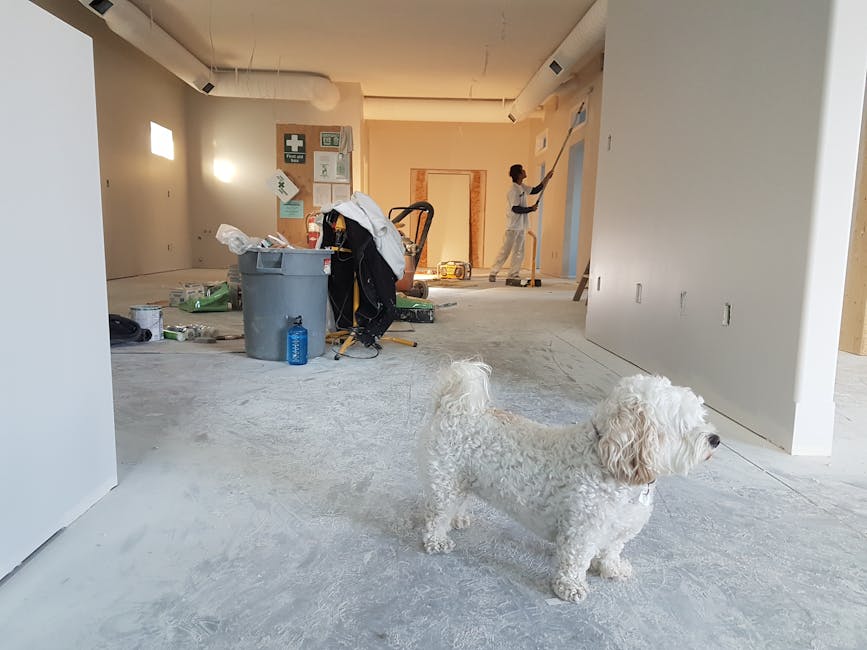A forgotten zone, a shadowy recess – that’s how most people view their crawl space. But what if, during a remodel, that awkward void became a valuable asset? The metamorphosis of a crawl space into a usable storage area is a enticing prospect, packed with potential though fraught with caveats. Lets look at the ins and outs of this storage option.
Understanding Your Crawl Space’s Potential
Not all crawl spaces are created equal. Size, accessibility, and existing conditions play crucial roles in determing its suitability for conversion. A damp, dirt-floored space presents a different set of challenges than a relatively dry, concrete-lined one. Assess your crawl space diligently. Are there signs of moisture? Visible mold growth? Critter infestations? Addressing these issues is paramout. Consider the crawl space dimensions. Headroom is key; stooping and crawling make accessing storage a chore. Also, is the entrance wide enough to get items in and out? Perhaps it will be better to install bigger crawlspace doors?
Moisture Mitigation: A Fundamental Prerequisite
Moisture, the bane of crawl spaces, necessitates meticulous attention. Untreated moisture leads to mold, mildew, rot, and pest infestations – a storage nightmare! Vapor barriers are your first line of defense, especially over dirt floors. Overlap seems important and tape the seams to create a continuous barrier. Adequate ventilation is equally crucial. Consider installing crawl space vents or a dehumidifier to maintain a controlled environment. Regular inspections can help you nip moisture problems in the bud. Also have a foundation expert or structural engineer look at it.
Addressing Structural Integrity
Before loading up your newly converted storage space, ensure the structural integrity of your foundation and floor joists. Are there signs of sagging, cracking, or wood rot? If so, consult with a structural engineer or qualified contractor. Reinforcing the floor joists may be necessary, especially if you plan to store heavy items. Crawl spaces are often subjected to differential settling, which can compromise the structural soundness of the entire house. A solid, stable foundation is the bedrock of any successful crawl space conversion.
Selecting Appropriate Storage Solutions
Choosing the right storage solutions is crucial to maximizing space and minimizing moisture-related issues. Avoid storing items directly on the floor, even if a vapor barrier is in place. Opt for shelving units, plastic bins, and pallets to keep belongings elevated. Moisture-sensitive items, such as paper documents or textiles, should be stored in airtight containers with desiccant packs to absorb any residual moisture. Proper labeling and organization will make it easier to find what you need when you need it. Consider the weight of your stored items. Distribute the load evenly across the floor joists to prevent overloading.
Enhancing Accessibility and Illumination
A dimly lit, hard-to-access crawl space will quickly deter even the most dedicated organizers. Improve access by widening the existing entrance or creating a new one, if possible. Consider installing a proper door with a secure latch to keep out pests and unauthorized access. Adequate lighting is essential. Install moisture-resistant light fixtures and consider using motion-sensor lights for added convenience. A well-lit, easily accessible crawl space is much more likely to be used effectively.
Flooring Considerations
While a dirt floor can be covered with a vapor barrier, a concrete slab provides a more stable and cleaner surface for storage. Pouring a concrete slab in a crawl space can be a significant undertaking, but it can be well worth the investment in terms of improved usability and moisture control. If you opt for a concrete slab, ensure it is properly sloped for drainage and sealed to prevent moisture from seeping through. Another alternative is to install a subfloor system that elevates the storage area above the existing dirt or gravel floor.
Pest Control and Prevention
Crawl spaces are prime real estate for pests, including rodents, insects, and termites. Before converting your crawl space into storage, take steps to eradicate any existing infestations and prevent future ones. Seal any cracks or openings in the foundation walls and around pipes and wires. Install pest-resistant screens over vents and other openings. Consider applying a termiticide treatment to the soil around the foundation. Regular inspections and preventative treatments can help keep pests at bay.
Climate Control Options
While a vapor barrier and ventilation can help mitigate moisture problems, climate control can take it a step further. Consider installing a dehumidifier to maintain a consistently low humidity level in the crawl space. In some cases, it may be feasible to extend your home's existing HVAC system into the crawl space. This can help regulate both temperature and humidity, creating a more stable and suitable environment for storage. However, it's also crucial to consider insulation.
Safety Precautions: Don’t Neglect the Details
Converting a crawl space into storage involves potential safety hazards. Wear appropriate personal protective equipment (PPE), including gloves, eye protection, and a respirator, when working in the crawl space. Be aware of potential hazards, such as exposed wiring, sharp objects, and confined spaces. Ensure adequate ventilation when using any chemicals or adhesives. Never store flammable or hazardous materials in the crawl space. Install a carbon monoxide detector in the crawl space and on the floor above. Finally, inform family members or neighbors that you will be working in the crawl space and establish a check-in system.
Insulation Considerations
Proper insulation can help regulate temperature and reduce energy costs. Consider insulating the foundation walls and the underside of the floor joists. Rigid foam insulation is a good choice for crawl space walls, as it is moisture-resistant and easy to install. Spray foam insulation can be used to seal air leaks and provide a continuous layer of insulation. When insulating the underside of the floor joists, be sure to leave a gap between the insulation and the vapor barrier to allow for air circulation.
Permits and Regulations: Are They Necessary?
Depending on your location and the scope of the conversion, you may need to obtain permits and adhere to local building codes. Check with your local building department to determine the requirements for converting a crawl space into storage. Permits may be required for structural modifications, electrical work, or plumbing changes. Ignoring permit requirements can result in fines, delays, and even the need to undo the work.
Case Studies: Examples of Successful Conversions
Looking at examples of other crawl space conversions can provide inspiration and guidance. One homeowner transformed their damp, dirt-floored crawl space into a dry, organized storage area by installing a vapor barrier, a concrete slab, and shelving units. Another homeowner converted their crawl space into a wine cellar by installing climate control equipment and custom wine racks. These case studies demonstrate the potential of crawl space conversion, but they also highlight the importance of careful planning and execution.
Long-Term Maintenance and Monitoring
Converting a crawl space into storage is not a one-time project; it requires ongoing maintenance and monitoring. Regularly inspect the crawl space for signs of moisture, pests, or structural problems. Clean the crawl space periodically to remove dust and debris. Check the vapor barrier and ventilation system to ensure they are functioning properly. Address any issues promptly to prevent them from escalating. With proper care and maintenance, your converted crawl space can provide years of valuable storage space.
Alternative Uses: Beyond Basic Storage
While storage is the most common use for a converted crawl space, there are other possibilities to consider. With adequate waterproofing and climate control, a crawl space could be converted into a wine cellar, a workshop, or even a small office. These alternative uses require more extensive modifications and a higher level of investment, but they can significantly increase the value and functionality of your home.
Material Selection
Choosing the correct materials is paramount for a robust and long-lasting storage solution. For shelving, consider using metal or durable plastic. Wood shelving can be used, but ensure it's treated for moisture resistance. Plastic storage containers are an excellent choice for protecting items from dampness and pests. When selecting insulation, opt for closed-cell spray foam or rigid foam board, as these are more resistant to moisture than fiberglass batts.
Cost Considerations
Converting a crawl space can range from a relatively simple and inexpensive project to a more extensive and costly undertaking. The cost will depend on factors such as the size of the crawl space, the existing conditions, the extent of the modifications, and the materials used. Simple improvements, such as installing a vapor barrier and shelving units, can be done for a few hundred dollars. More extensive conversions, such as pouring a concrete slab, installing climate control equipment, and reinforcing the floor joists, can cost several thousand dollars.
DIY vs. Professional Installation
Some aspects of crawl space conversion, such as installing shelving units and organizing belongings, can easily be done as a DIY project. However, other aspects, such as structural repairs, electrical work, and plumbing changes, are best left to qualified professionals. If you are not comfortable or experienced with these types of tasks, it is worth the investment to hire a contractor. A professional can ensure that the work is done safely and correctly, and they can also help you obtain any necessary permits.
Impact on Home Value
A properly converted crawl space can add value to your home. Potential buyers appreciate the additional storage space, and a well-maintained crawl space can be a sign of a well-cared-for home. However, a poorly converted crawl space can actually detract from the value of your home. If the crawl space is damp, musty, or infested with pests, it can be a major turnoff for buyers. Investing in a high-quality conversion that addresses moisture, pests, and structural issues can pay off in the long run.
Future-Proofing Your Crawl Space
When converting your crawl space, consider future needs and potential changes. Design the storage area to be flexible and adaptable. Use shelving units that can be easily reconfigured or moved. Install electrical outlets and lighting that can accommodate a variety of uses. Think about the potential for future upgrades, such as adding climate control or converting the crawl space into a different type of space altogether. By planning for the future, you can ensure that your converted crawl space will continue to be a valuable asset for years to come.







